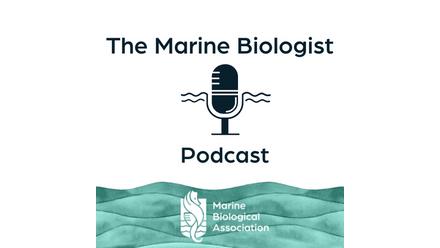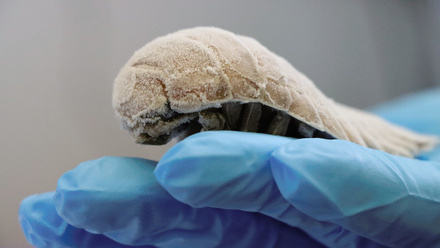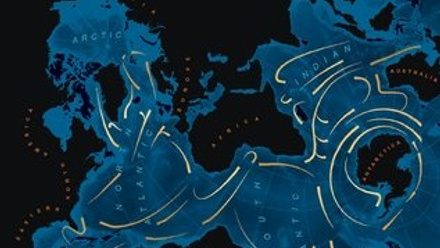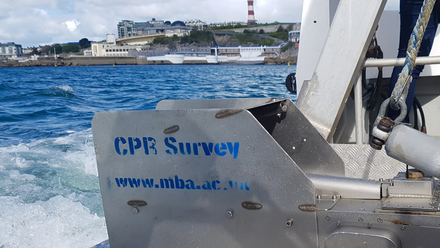Darwin Tree of Life
The Darwin Tree of Life project (DToL)1 was founded with the ambitious goal of discovering the genomes of all 70,000 eukaryotic organisms in Britain and Ireland (see Box 1). But what is a genome, and why would you want to study it?
What is a genome?
Genomes are the full set of instructions containing DNA and everything else needed to build living things and enable them to survive. Everything has evolved individually to deal with the distinct challenges of its environment, and so all genomes are unique, holding the exact information needed to build a single organism. Sequencing a genome lays out all this information, allowing scientists to pick relevant sections out of the sequence, and helping them understand the processes driving that organism.
The foundation of projects like DToL were laid by the Human Genome project (HGP). The far-reaching HGP employed a huge consortium of very talented people, cost over a billion dollars, and took over 13 years to complete. This project was far-reaching, changing the way we thought about and worked with big data, generating close to $800 billion in economic returns and, of course, pushing forward medical research; including identifying 70 genes that change how effectively humans can metabolize drugs. Importantly for genome research, the HGP provided new ways of sequencing genomes, and inspired other ambitious projects.
New projects like DToL and The Earth BioGenome Project (EBP)2 are working in parallel to create new data. The EBP is an international initiative working towards sequencing the genomes of all of Earth’s eukaryote species over the next 10 years. Collaboration is the new way forward for science, with projects and organizations supporting each other to achieve common goals for the good of science and humanity.
Why sequence marine organisms?
The Marine Biological Association's Plymouth laboratory hosts the marine component of DToL. Although marine organisms can sometimes be less studied than their terrestrial counterparts, they show huge potential for containing useful genomic information. The ocean is a vastly complex environment that provides a multitude of niches for organisms to occupy. In the ocean no surface is sacred: plants and algae grow over animals, animals grow over plants and algae (Fig. 2), and fungi and single-cell protists exist in almost every space you can think of. There is collaboration and symbiosis, alongside constant warfare and an evolutionary battle for each organism’s survival.
Research on marine organisms in recent decades has shown them to be a prolific source of bioactive compounds (see Box 2) and a gold mine of potential genetic information. Nature is the source of more than 80 per cent of anti-infective drugs available on the market, and as resistant pathogens increase, our need for novel antibiotic agents grows. As more researchers turn to the seas for solutions, a growing body of research on understudied groups emerges.
Box 1. What is a eukaryote?
Everything alive on earth is a prokaryote or a eukaryote. The main difference between eukaryotes and prokaryotes is that the cells of eukaryotes have a membrane-bound nucleus and organelles. Bacteria, archaea and cyanobacteria (blue-green algae) are all prokaryotes. We are eukaryotes, alongside all other animals, plants, fungi, and protists. Protists are what we call anything we can’t put in the plant, animal, or fungi box, and includes everything from the single-celled Alexandrium minutum to the forest-growing laminaria (also known as kelp).
IMAGE Figure 1.
Figure 1. The diversity of shape, size and life history is vast within the protist group. Left: a microscopic protist A. minutum. Right: another protist on a much larger scale, kelp), both are ‘plant-like’ protists. © MBA.
Quality genomic data will likely underpin future progress in pharmacology, how we deal with pollution, and innovative solutions to aspects of the climate and biodiversity crisis. However, creating an open dataset that anyone can access via the internet is an essential part of this process. Publicly available DNA, RNA, and protein data can be searched to find novel metabolic pathways. The very detailed genomic information generated by DToL will facilitate the discovery of new marine natural products.
Other benefits of DToL
The foundations of the theory of evolution were laid by Charles Darwin in 1859 and although DNA was discovered at around the same time by Friedrich Miescher, its importance in evolution was not understood until a century later. DNA connects all life on Earth, holding within it the secrets of its ancestors, the challenges they faced, and how they persevered or perished: an endless story with a million different endings.
'The very detailed genomic information generated by DToL will facilitate the discovery of new marine natural products'
The DToL project is supplying an immense source of data which will undoubtedly hold numerous mysteries. As with many of the scientists that came before us, the full ramifications of our work may be realized beyond our own lifetimes. In the meantime, we may discover new species, find important connections on the tree of life, and identify new information contained within the genome of a tiny snail adapted to life amongst the rock pools. For those species or ecosystems we may lose in the future, this will also create a blueprint for potentially rebuilding communities, or for understanding resilience in the species that are clinging on. The data may also illuminate ways to support adaptation of ecosystems to ensure that they continue to function and provide the services we need for our own survival.
Kes Scott-Somme (kessco@mba.ac.uk), Research Assistant.
@kesellanutella
Further reading:
Blaxter, M., Archibald, J.M., Childers, A.K., Coddington, J.A., Crandall, K.A., Di Palma, F., Durbin, R., Edwards, S.V., Graves, J.A., Hackett, K.J. and Hall, N., 2022. Why sequence all eukaryotes? Proceedings of the National Academy of Sciences 119(4).
Hood, L. and Rowen, L., 2013. The human genome project: big science transforms biology and medicine. Genome medicine 5(9), pp.1-8.
Mieszkowska, N., Wilson, W.H., Jenkins, H.L., Mrow- icki, R., Cunliffe, M., Adkins, P., Lonsdale, P., Harley, J., Bishop, J.D.D., Warring, S. and Blaxter, M.L., 2022. Sequence locally, think globally: The Darwin Tree of Life Project. Proceedings of the National Academy of Sci- ences 119(4).




